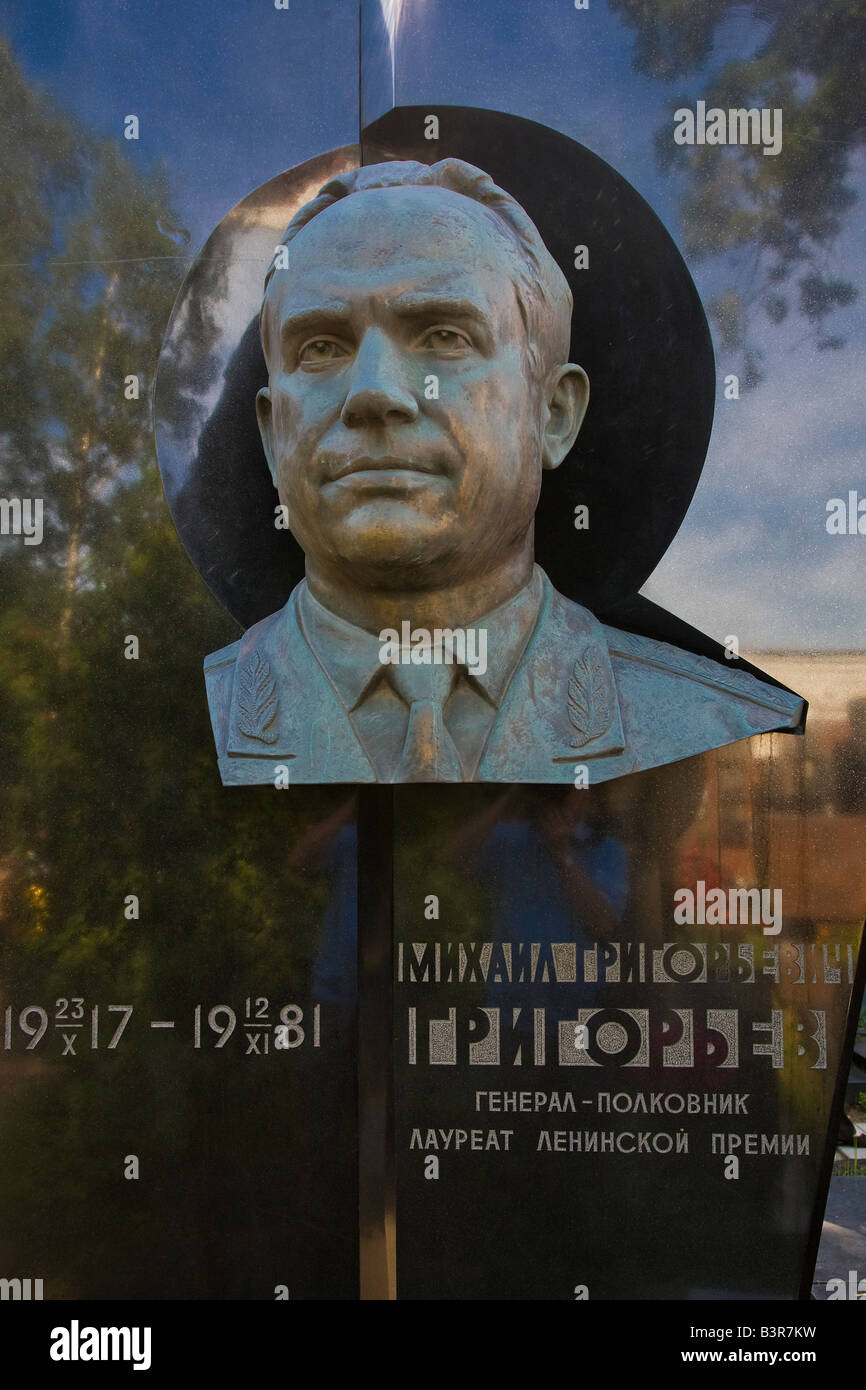Sculpted monument in Novodevichy Cemetery.

Image details
Contributor:
Bill Heinsohn / Alamy Stock PhotoImage ID:
B3R7KWFile size:
50 MB (2.1 MB Compressed download)Releases:
Model - no | Property - noDo I need a release?Dimensions:
3413 x 5119 px | 28.9 x 43.3 cm | 11.4 x 17.1 inches | 300dpiDate taken:
8 August 2008Location:
Novodevichy Cemetery, Moscow, RussiaMore information:
Novodevichy Cemetery (Russian: Novodevichye kladbishche) is the most famous cemetery in Moscow, Russia, situated next to the World Heritage Site, the 16th-century Novodevichy Convent, which is the city's third most popular tourist site. It should not be confused with the Novodevichy Cemetery in Saint Petersburg. The cemetery was inaugurated in 1898, when it was judged that there were too many burials within monastery walls. One of the first notables to be buried there was Anton Pavlovich Chekhov, whose gilded tomb is the work of Fyodor Shekhtel. Today, the cemetery holds the tombs of Russian authors, musicians, playwrights, and poets, as well as famous actors, political leaders, and scientists. More than 27, 000 are buried at Novodevichy. It has a park-like ambience, dotted with small chapels and large sculpted monuments. It is divided into an eastern and western section; maps are available at the cemetery office. Under Soviet rule, burial in the Novodevichy Cemetery was second in prestige only to burial in the Kremlin Wall Necropolis. Since the fall of the Soviet Union, the Kremlin Wall is no longer used for burials and the Novodevichy Cemetery is used for only the most symbolically significant burials. For example, in April 2007, within one week both the first President of the Russian Federation Boris Yeltsin and world renowned cellist Mstislav Rostropovich were buried there. In 2001 there was an attempt to move ballerina Anna Pavlova's remains to the Novodevichy Cemetery in accordance with her requests and after considerable controversy.